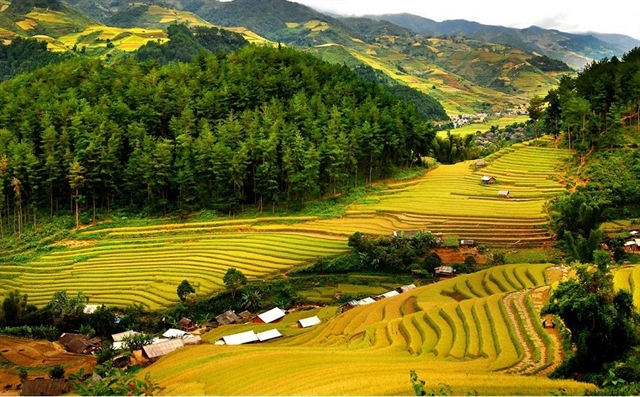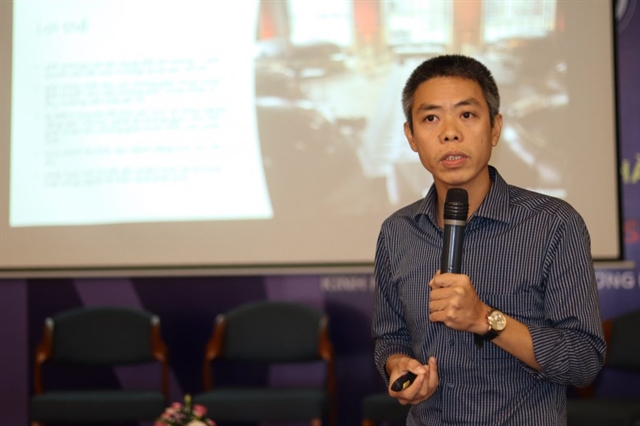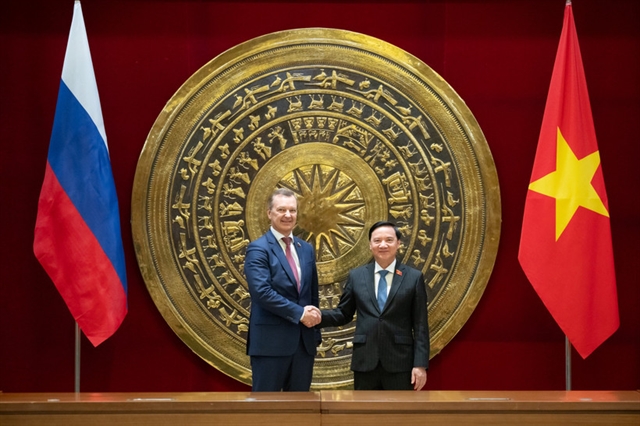 Life & Style
Life & Style


|
| Curator and art director of Heritage Space Nguyễn Anh Tuấn. — Photo kienviet.net |
The sixth Month of Art Practice (MAP) has been carried out by Heritage Space from October 12 to December 12. It includes several types of programmes such as lectures and artist talks, workshops, field trips and exhibitions.
MAP 2020 is a combination of virtual programmes and physical events and activities in different cultural and art locations in Hà Nội.
Nguyễn Anh Tuấn, Heritage Space's art director, spoke to luxuo.vn reporter Trang Ps about the project.
Could you tell us about MAP?
MAP is an annual recurring project model with a fixed time format and programme framework. Usually we raise funds at the end of the year to early next year. We select and send invitations to participating artists in March and April; design a work schedule from May to July; do pre-project activities in August and September and the two final months of the year are for MAP organisation.
MAP has become popular and is recognised by domestic and international art communities. Every year, we receive applications from new artists and co-operation invitations from international projects. We also look for financial support sources and opportunities for artist exchange.
Plus, we have strong relationships with international cultural centres in Việt Nam such as Goethe Institute, British Council, Centre for Japanese Cultural Exchange or French Cultural Centre, domestic arts groups and spaces and creative hubs to call for support or co-operation in the project at any time.
We also have a team of project co-ordinators who are professional in every step of project organisation. Many of them are not relevant to the art sector and they are volunteers of the previous MAP. They like MAP and become official members of Heritage Space.
That is an interesting and unexpected point I did not think about when I started MAP at Heritage Space.
How did you organise MAP 2020 in the context of COVID-19?
MAP was set up with a dreamy idea about "a school for contemporary art where every idea is accepted, where there are no teachers and students, and it is open for all veteran and new artists to work and co-operate".
MAP has two stages. First is practice and exchange. International and Vietnamese artists will be invited to come to Hà Nội for a 5 week-residency programme. The second stage will be an exhibition showing artworks from the residency programme.
The residency programme includes many activities among the artists. Interaction and culture characteristics are really diversified and unique.
This year, we cannot have an artist exchange due to the pandemic. The participating artists have to work from home. Group discussions, lectures and artist talks have been held online.
We have been working with four time zones and artists and curators in nine cities including Hà Nội, Đà Nẵng, HCM City, Singapore, Tokyo, Zurich, Leipzig, Paris and Stuttgart.
Online workshops cannot be efficient as offline meetings. That is the biggest challenge for organisers.
However, online work has its own benefits.
Under MAP, we collected about 100 old umbrellas and their owner's stories for a mass performance. The umbrellas will be packed and sent to artist Katja Jug in Zurich for her work.
An exhibition is being held in Hà Nội and her studio in Zurich.
Another example is interesting. We are also supporting Japanese artist Masahiro Wada to conduct online interviews with Vietnamese people including people who have been or have never been to Japan.
Therefore, MAP's exhibitions are expected to show the effectiveness of online work among artists.
Perhaps it is still early to speak about the advantages and disadvantages of an online project at the moment.
However, all of us, the artists and organisers, think it is a really useful experience as it probably won't be repeated. Or, it will be a good preparation for the future, as we don't yet know how COVID-19 will continue to influence the world.
Why has the project used Hà Nội as its theme for this year?
In fact, MAP always focuses on Hà Nội as the topic of the project. It was initiated by artist Trần Trọng Vũ who has been the founder and co-ordinator of MAP since 2015.
I began working at Heritage Space in 2016 and joined in co-ordination with him.
Hà Nội is a special city in Việt Nam. Like other cities or places in the world, it has its own typical characteristics of culture, history and architecture.
Vũ and I were born in Hà Nội. We chose Hà Nội as a theme because we understand it best and most naturally as part of our body and thought.
MAP's annual theme has been based on Hà Nội. International artists have been eager to work with this theme because they see there relevant issues, feelings or relationships to their personal and cultural experiences.
Could you tell us about the artists and curators at MAP this year?
MAP always tries to invite artists and curators from different countries to bring different perspectives on culture, social-political background and work experience.
Personally I feel that working with artists and experts from many places around the world has become normal. I am always excited because each new person brings new thoughts and new ways to work that make the project new. VNS




